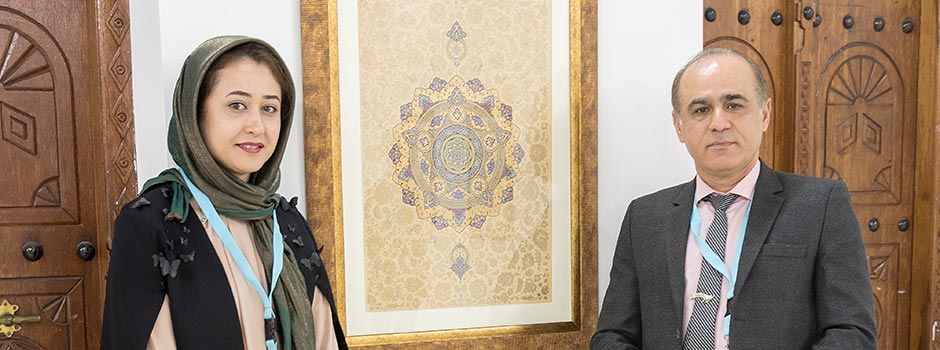
SHARJAH ISLAMIC ARTS FESTIVAL (SIAF) 2019-20 The Role of Imagination in Islamic Arts
Jan 04, 2020 EVENT, Art Festival

Under the patronage of His Highness Sheikh Dr. Sultan Bin Mohammed Al Qasimi, member of the Supreme Council and Ruler of Sharjah, the Cultural Affairs Department at the Sharjah Department of Culture has organised the 22nd edition of the Sharjah Islamic Arts Festival, which will run until January 21, 2020.
The exhibition titled 'The Role of Imagination in Islamic Arts' presents the artworks by two Iranian artists Mohsen Aghamiri and Zeinab Shahi. It opened at the Sharjah Centre for the Art of Arabic Calligraphy and ornamentation and was attended by HE Abdullah Al Owais, Chairman of Sharjah Department of Culture; Mohammed Al Qaseer, Head of Cultural Affairs and General Coordinator at the Department of Culture; and Farah Qassim Mohammed, Islamic Arts Festival Executive; in the presence of the artists, media and esteemed guests.
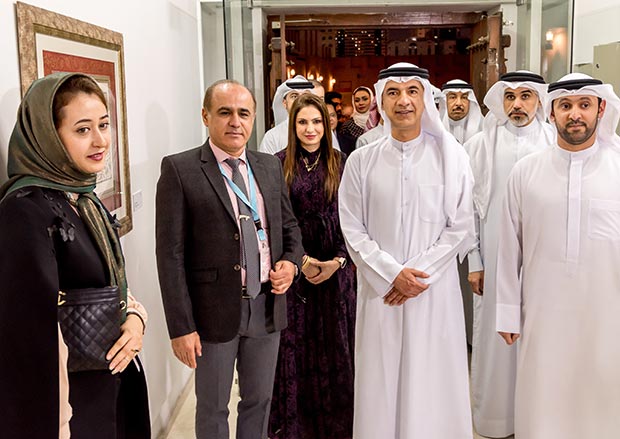 Mohsen Aghamiri and Zeynab Shahi with HE Abdullah Al Owais, Mohammed Al Qaseer and Farah Qassim Mohammed / Photo © Islamic Arts Magazine
Mohsen Aghamiri and Zeynab Shahi with HE Abdullah Al Owais, Mohammed Al Qaseer and Farah Qassim Mohammed / Photo © Islamic Arts Magazine
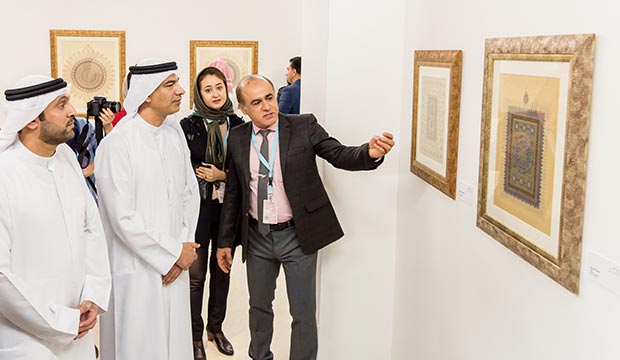 Mohsen Aghamiri and Zeynab Shahi with HE Abdullah Al Owais, Mohammed Al Qaseer / Photo © Islamic Arts Magazine
Mohsen Aghamiri and Zeynab Shahi with HE Abdullah Al Owais, Mohammed Al Qaseer / Photo © Islamic Arts Magazine
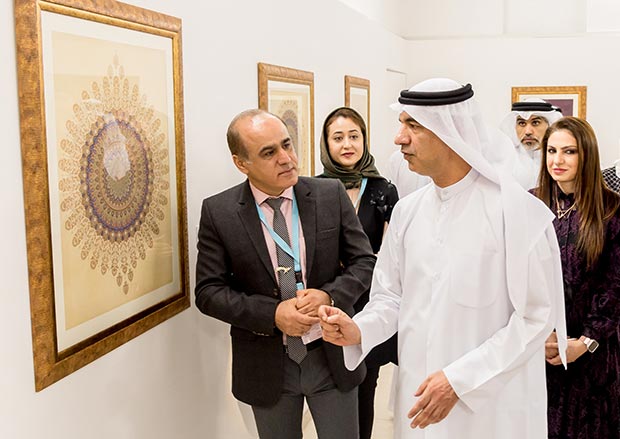 Mohsen Aghamiri and Zeynab Shahi with HE Abdullah Al Owais and Farah Qassim Mohammed / Photo © Islamic Arts Magazine
Mohsen Aghamiri and Zeynab Shahi with HE Abdullah Al Owais and Farah Qassim Mohammed / Photo © Islamic Arts Magazine
The golden period of Islamic manuscript illumination dates back to the 16th and early 17th centuries. In that time, the two most powerful states were the Ottoman Empire and the Safavid Empire, which were not only political rivals but also cultural. During that time, art reached its peak in both empires. At the forefront was the decoration of the Qur'anic manuscripts. However, all other manuscripts were also decorated, regardless of their content, such as manuscripts in the fields of law and economics, a practice not so common in other cultures.
Both, Ottoman and Safavid illumination, were dominated by two colours, ultramarine blue and gold. Blue was used for background, and gold for decoration of ornaments. Illumination styles have changed over time, which was especially true in Ottoman art. The abstract character was transformed into more realistic patterns. In the 18th and 19th centuries, schematized twisted ornaments were replaced with floral decor and larger ornaments. Unlike the Ottomans, the Safavid dynasty, and from the second half of the 18th century also the Qajar dynasty remained faithful to earlier forms. Some shift has been noticeable in the composition schemes, but the aesthetics of the 16th century, despite certain changes, persisted in the Iranian illumination to this day.
Mohsen Aghamiri is a professor at the University of the Arts in Tehran and has won many awards for his work, including numerous solo and group exhibitions in which he has participated, and Zeinab Shahi is professionally engaged in illumination under the patronage of Master Aghamiri.
 Zeynab Shahi, Calligraphy Epigraph, 62 x 55 cm / Photo © Islamic Arts Magazine
Zeynab Shahi, Calligraphy Epigraph, 62 x 55 cm / Photo © Islamic Arts Magazine
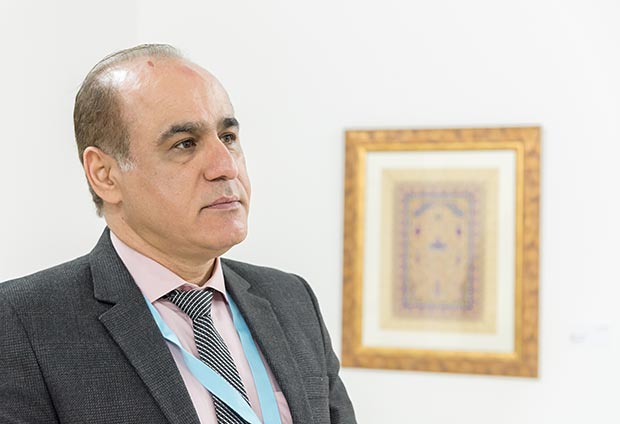 Mohsen Aghamiri / Photo © Islamic Arts Magazine
Mohsen Aghamiri / Photo © Islamic Arts Magazine
 Zeynab Shahi / Photo © Islamic Arts Magazine
Zeynab Shahi / Photo © Islamic Arts Magazine
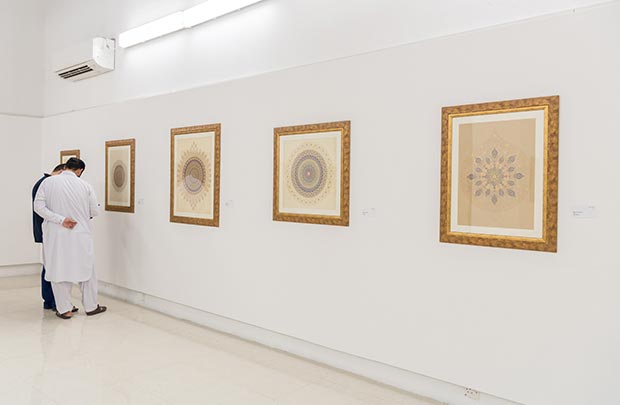 Installation view of the exhibition 'The Role of Imagination in Islamic Arts' by Mohsen Aghamiri and Zeynab Shahi / Photo © Islamic Arts Magazine
Installation view of the exhibition 'The Role of Imagination in Islamic Arts' by Mohsen Aghamiri and Zeynab Shahi / Photo © Islamic Arts Magazine
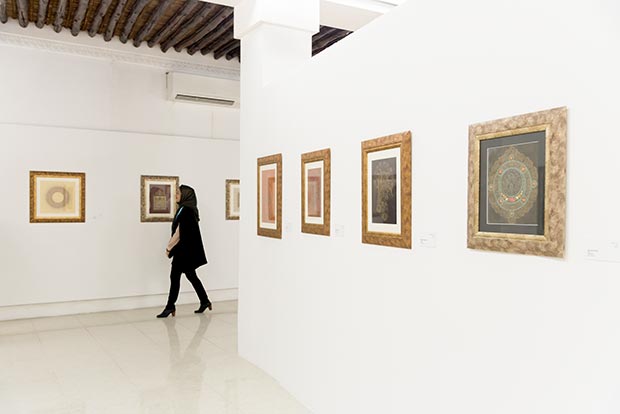 Installation view of the exhibition 'The Role of Imagination in Islamic Arts' by Mohsen Aghamiri and Zeynab Shahi / Photo © Islamic Arts Magazine
Installation view of the exhibition 'The Role of Imagination in Islamic Arts' by Mohsen Aghamiri and Zeynab Shahi / Photo © Islamic Arts Magazine
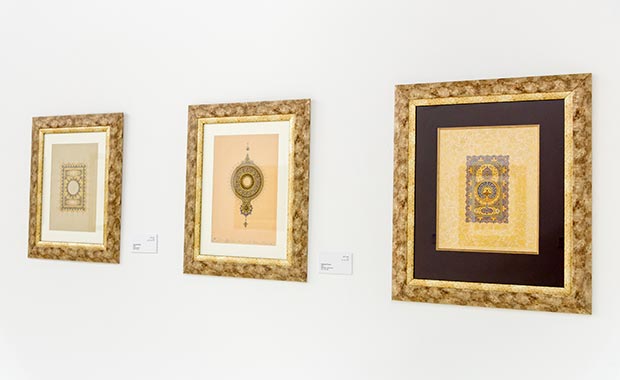 Installation view of the exhibition 'The Role of Imagination in Islamic Arts' by Mohsen Aghamiri and Zeynab Shahi / Photo © Islamic Arts Magazine
Installation view of the exhibition 'The Role of Imagination in Islamic Arts' by Mohsen Aghamiri and Zeynab Shahi / Photo © Islamic Arts Magazine
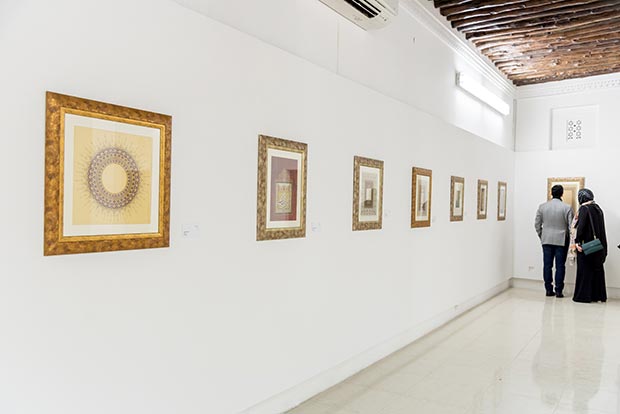 Installation view of the exhibition 'The Role of Imagination in Islamic Arts' by Mohsen Aghamiri and Zeynab Shahi / Photo © Islamic Arts Magazine
Installation view of the exhibition 'The Role of Imagination in Islamic Arts' by Mohsen Aghamiri and Zeynab Shahi / Photo © Islamic Arts Magazine
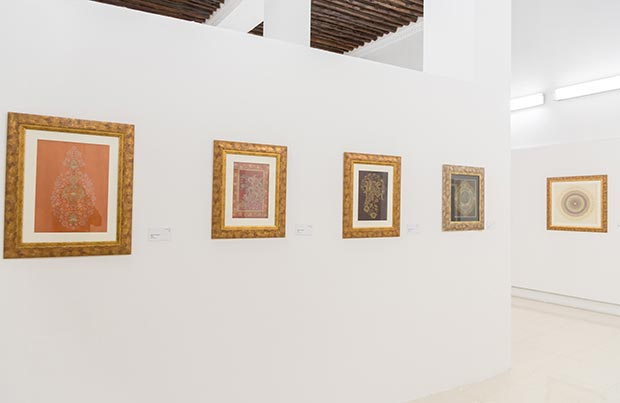 Installation view of the exhibition 'The Role of Imagination in Islamic Arts' by Mohsen Aghamiri and Zeynab Shahi / Photo © Islamic Arts Magazine
Installation view of the exhibition 'The Role of Imagination in Islamic Arts' by Mohsen Aghamiri and Zeynab Shahi / Photo © Islamic Arts Magazine
The works they presented are among the finest examples of present-day art of illumination in the Islamic world, relying on the great tradition of Iranian illumination and role models from earlier centuries. Most of the works presented, dominated by gold and blue, with different floral and abstract shapes and classic ornaments, are templates for decorating the pages of the Qur'an, while some of the works are called 'Paradise Doors' or 'Shamsa', large circular ornaments. The exceptional technique, complex compositions, and harmonious colour layout make these artworks masterpieces of today's Iranian illumination (tezhib).
Comments
Add a comment